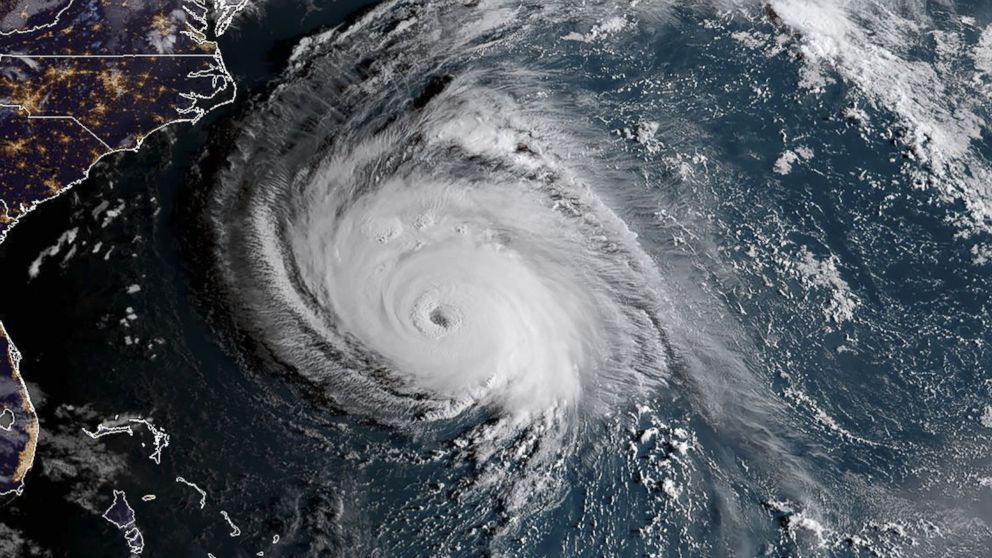
Hurricane Florence is expected to bring catastrophic flooding to the Southeast and may dump as much as 40 inches of rain in North Carolina alone.
“This will likely be the storm of a lifetime for portions of the Carolina coast, and that’s saying a lot given the impacts we’ve seen from Hurricanes Diana, Hugo, Fran, Bonnie, Floyd, and Matthew,” according to one National Weather Service meteorologist in Wilmington, North Carolina. “I can’t emphasize enough the potential for unbelievable damage from wind, storm surge, and inland flooding with this storm.”
With the storm not making landfall until the weekend, residents in at least three states have more time to evacuate and prepare.
Here is the latest:
— Florence is a dangerous Category 4 storm Wednesday morning, with maximum sustained winds of 130 mph.
— The path, intensity and timing is likely to keep changing throughout Wednesday but the latest forecast from the National Weather Service shows Florence no longer reaching Category 5 status — that is with winds of 145 mph.
— Overnight the storm shifted south, Brock Long, administrator of the Federal Emergency Management Agency, told “Good Morning America” Wednesday.
— “The question is whether it will continue to do that today,” Long said. “This is a highly dynamic situation that requires constant monitoring.”
— The latest trajectory shows Florence beginning to slow down on Thursday.
— Because of that slowdown, rainfall totals will be even higher than previously forecast. The southeast coast of North Carolina could see as much as 40 inches of rain — in line with the catastrophic flooding caused by Hurricane Harvey last year in the Houston area.
Florence will also bring life-threatening storm surge wherever it makes landfall, warned Long, a North Carolina native who lived through Hurricane Hugo in 1989.
“This is going to be a big hit with storm surge at the coast,” he said. “People do not live and survive to tell the tale about what their experience is like with storm surge. It’s the most deadly part of the hurricane that comes in, it causes the most amount of destruction.”
President Donald Trump wrote on Twitter that the storm is “looking even bigger than anticipated” but the federal government is “supplied and ready.”
In a subsequent video message posted to Twitter, Trump implored residents to “get out of the storm’s way.”
“They say it’s about as big as they’ve seen coming to this country — and certainly to the East Coast — as they’ve ever seen,” he said. “We’re fully prepared — food, medical, everything you can imagine. We are ready but, despite that, bad things can happen when you’re talking about a storm this size. It’s called Mother Nature. You never know, but we know.”
As many as 1.7 million people have been ordered to evacuate across South Carolina, North Carolina and Virginia.
“Today is your last day to get out of the areas that have been placed under evacuation orders,” FEMA’s Long said. “If you don’t do it now, your time is going to be running out. And once the impacts of this storm start to come in, it’s going to be very difficult for first responders to get to you.”
Many people were already on the road Tuesday.
“If they say leave, leave,” said Jennifer Forte, who was in Kitty Hawk, North Carolina, on Tuesday and headed toward Greenville. “And my job is closed. I work for the government, they’ve closed. The school’s closed until Friday, so there’s no reason to stay, really.”
North Carolina Gov. Roy Cooper cautioned that high winds and floodwaters could knock power out “for several days if not longer.”
“We’ll be asking people to prepare their emergency kit,” he said. “Get food, water, if there are medications they may need. Pull together their important documents.”
ABC News’ Gio Benitez and Steve Osunsami contributed to this report.





